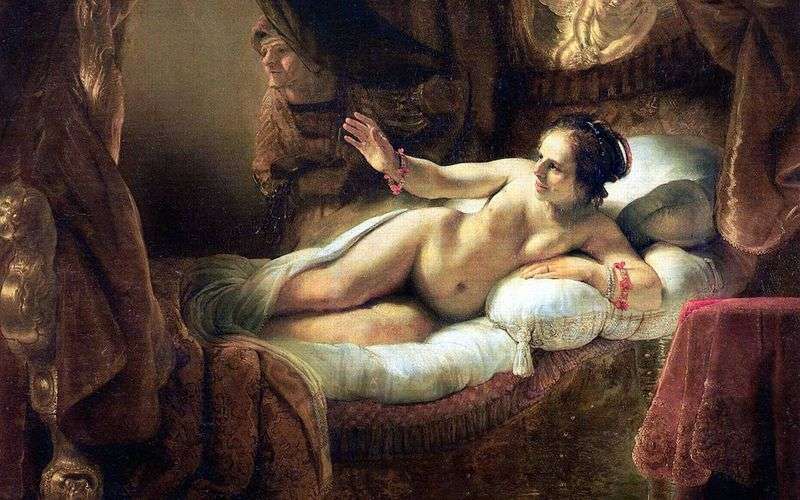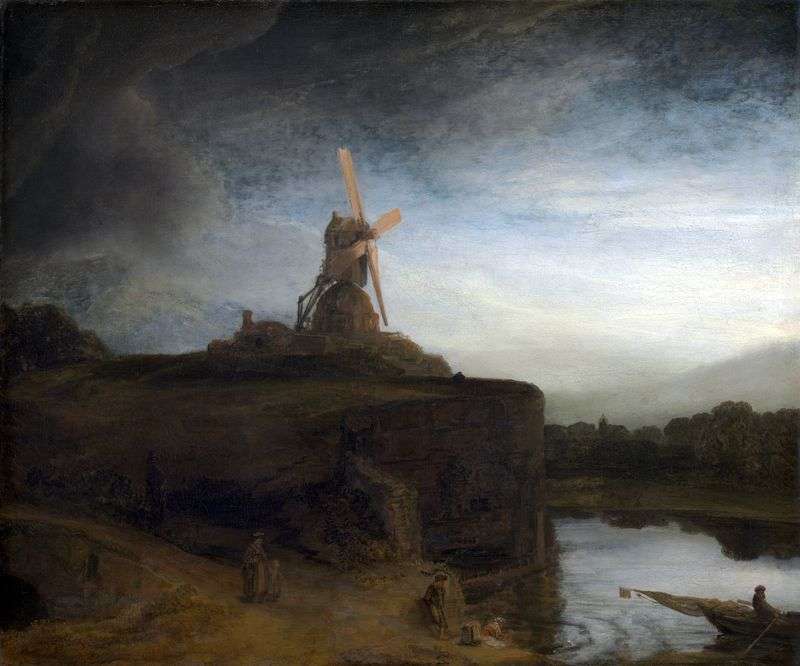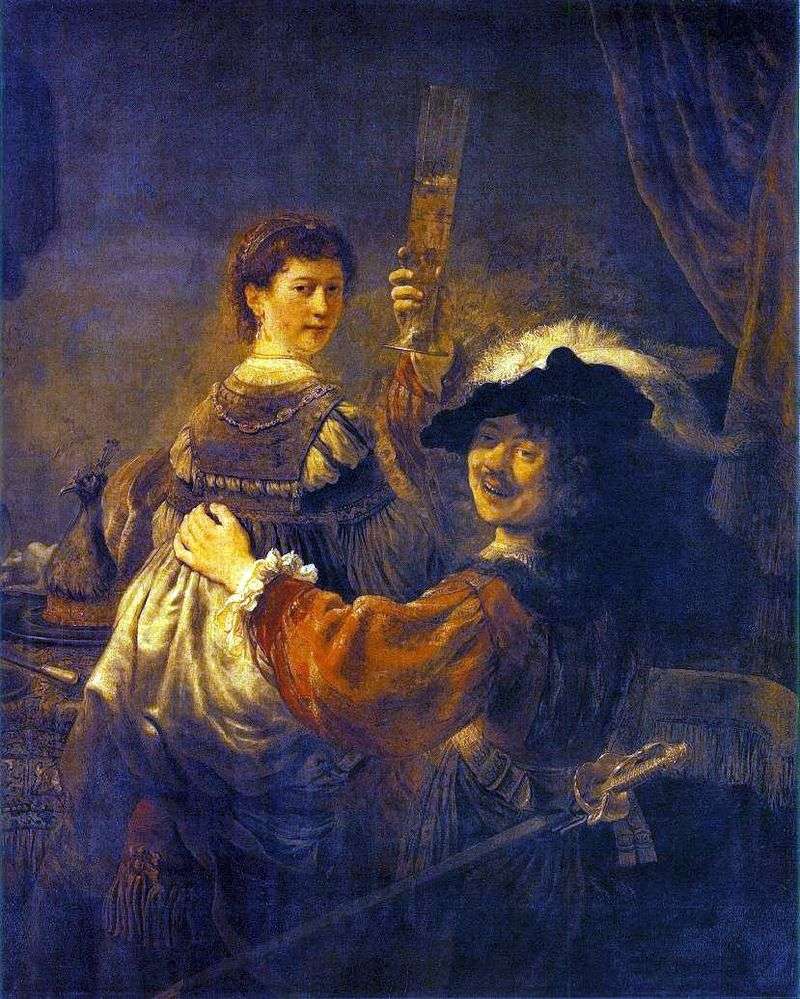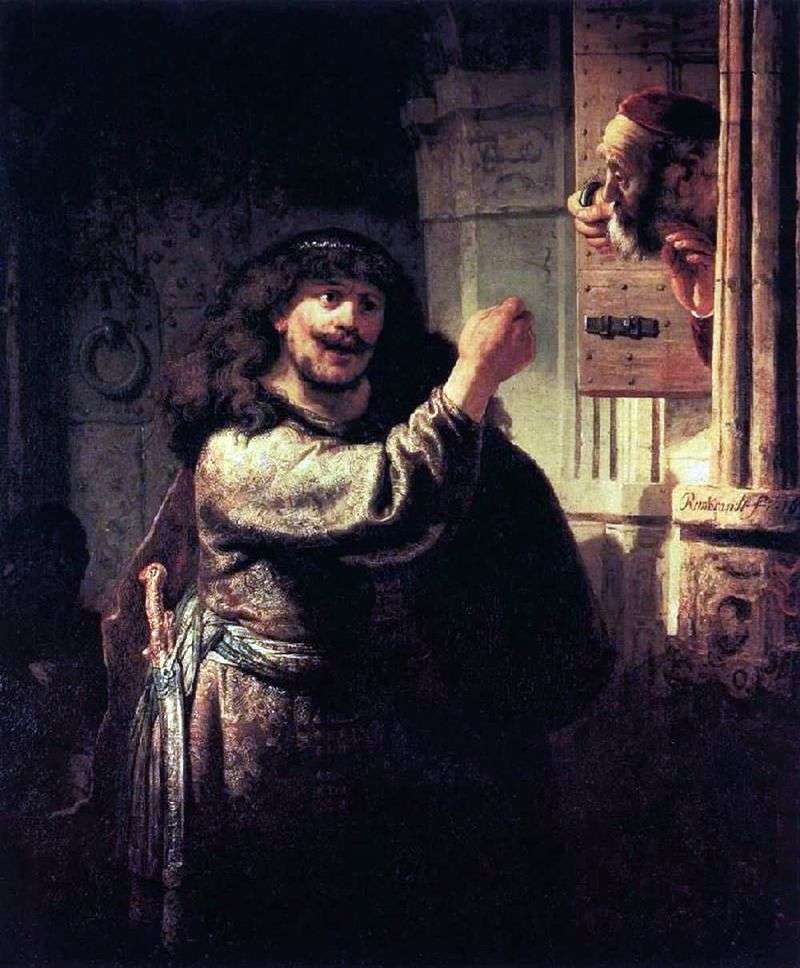
Painting by Dutch artist Rembrandt van Rijn “Danae”. The size of the painting is 185 x 203 cm, oil on canvas. This historical picture was reworked by the painter in the years 1646-1647. Danae, the daughter of the king of Argos, Acrisius, according to the myth, after the disastrous oracle prediction, was imprisoned by her father in an inaccessible dungeon, but the ruler of Olympus Zeus, having inflamed her love, penetrated to Danae through a light hole in the form of golden rain.
This theme was embodied by Renaissance artists and Dutch mannerists in two different iconographic versions; Rembrandt continues in this work the line of the so-called “type of courtesan.” But what did Rembrandt do in this picture? First, the artist lowered here the image of gold coins, this motive of selling love. Only a wonderful shine of light illuminates the body iridescent with tones of ivory.
The motive thus becomes more intimate, it loses publicity and acquires hidden and gullible humanity. Even the body of a woman does not have generally accepted features. It is very individual, its position – by chance, with its saggy belly, pressed chest, with legs covered with a spathe, it is very different from the ancient ideal of beauty. In addition, it is an instant, unique effect of light that strokes the body, envelops it with warm transparent shadows and creates its own space. It protects the body without hiding it.
The picture thus becomes, more than ever, a scene, a dialogue. Every gesture, every facial expression, every movement of Danae’s body suggests an invisible partner, the woman on the bed is meant for him, only him. “Instead of rain, there is a golden light, the personification of happiness, love, deliverance.” Such a symbolic interpretation of light completely corresponded to the general artistic aspirations of Rembrandt. ” .
The latest X-ray studies have shown that such a deep spiritualization of the image and the whole scene is a consequence of the later processing. It turned out that, along with other significant changes, the face and hair in the original version belonged to another model.
The first, recorded version was created under the clear impression of Saskia’s face, the final image probably conveys the features of Geertye Dirks. Therefore, it is possible that this deeply inner and sensual picture, with its welcoming and alluring gesture of Danae, has its own secret: “Thus, in this picture the destinies of Saskia, Geertye and Rembrandt are closely intertwined.” Actually, Saskia dies from the disease in 1642, she leaves Rembrandt’s son Titus, the only surviving child.
At the end of the same year, Rembrandt took to the house a young widow of the trumpeter Geertier Dirks, who soon soon took over the duties of a housewife and, accordingly, the artist’s civil wife. Seven years later, Geertier Dirks leaves home, freeing up space next to the artist, the young Hendrikier Stoffels, who was ten years younger than her. Subsequently, a dispute broke out around the complaint of Geertye about the violation of Rembrandt’s promise to marry her and about decorations from the Saskia inheritance that Rembrandt first presented to Geertye and later took.
Rembrandt very quickly terminates this dispute: in 1650, with the agreement of Brother Geertier and the approval of the Amsterdam burgomasters, at his own expense, Geertye Dirks imprisoned Gauda city for twelve years. But as early as May 1655, she, ill, thanks to the efforts of her Edam girlfriend and despite the bitter resistance of Rembrandt, is at large. A year later, Rembrandt imprisoned her brother in the debt prison due to non-return of funds.
 Danae – Rembrandt Harmens Van Rhine
Danae – Rembrandt Harmens Van Rhine The Mill by Rembrandt Harmens Van Rhine
The Mill by Rembrandt Harmens Van Rhine Fun Society (Self-Portrait with Saskia on Your Lap) by Rembrandt Harmens Van Rhine
Fun Society (Self-Portrait with Saskia on Your Lap) by Rembrandt Harmens Van Rhine Saskia van Eilenburg by Rembrandt Harmens Van Rhine
Saskia van Eilenburg by Rembrandt Harmens Van Rhine Danae – Rembrandt Harmenszoon Van Rijn
Danae – Rembrandt Harmenszoon Van Rijn Samson threatens to test by Rembrandt Harmens Van Rhine
Samson threatens to test by Rembrandt Harmens Van Rhine Portrait of Saskia van Eilebürch by Rembrandt Harmens Van Rhine
Portrait of Saskia van Eilebürch by Rembrandt Harmens Van Rhine Hendrickje by the window by Rembrandt Harmens Van Rhine
Hendrickje by the window by Rembrandt Harmens Van Rhine